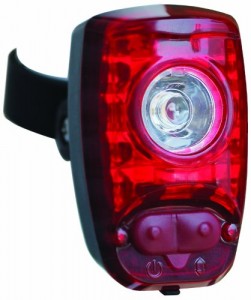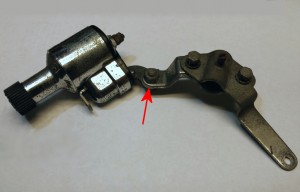I’ve written about it here before, and now after five years of development, I finally have my hands on the Lucid Brake bike light. And while it’s everything I had hoped it would be, I still am a bit at a loss with what to do with it.
 The concept was simple. A bike light that also alerted those behind you that you were stopping. It uses an inertial sensor to know when the light, and whatever it is attached to, stops or slows. The eight LEDs around the octagonal PC board, like a stop sign, come on brightly when stopping and flash furiously for a sudden stop. It’s quite an attention-getter, as it is designed to be.
The concept was simple. A bike light that also alerted those behind you that you were stopping. It uses an inertial sensor to know when the light, and whatever it is attached to, stops or slows. The eight LEDs around the octagonal PC board, like a stop sign, come on brightly when stopping and flash furiously for a sudden stop. It’s quite an attention-getter, as it is designed to be.
The LEDs flash or glow steadily, depending on the mode of operation, but are almost an afterthought to the brake function. One mode even leaves them off until a stop.
The board is coated and waterproof with the only bare spots being the battery connections which hold the 2 AAA batteries firmly. The device is meant to be lightweight and minimalist for the weight-weenies in the cycling world. For those who prefer a little more of a package, there is a translucent plastic cover that snaps over it.
It has no on-off switch! Continue Reading…


